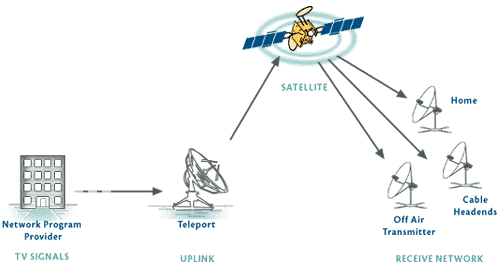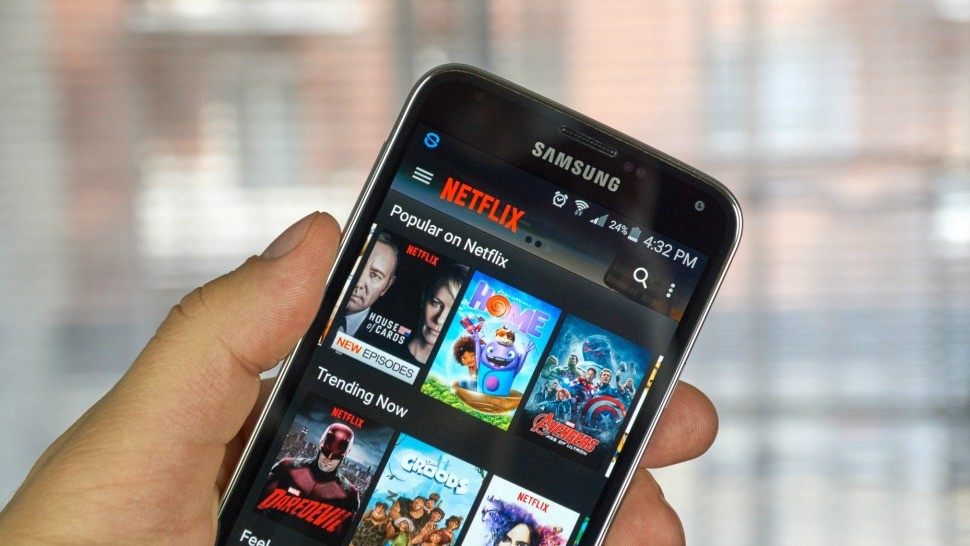
The popular song “Video Killed the Radio Star”, released by the Buggles in 1979, was an ode to how changes in technology lead directly to changes in fortunes in the entertainment industry.
This is a cycle that has played out multiple times, starting with radio to television in the 1950s. In the 1980s, the rise of cable television shook the entertainment industry. These changes are still happening today, as the rise of the Internet gave opportunity for on-demand video and new aggregation and streaming sites like Netflix and Hulu, or Amazon.
Today, with the rise of a new type of technology, blockchain, powered by nodes of peer to peer computers around the world and funded by new tokens, will this trend continue? Could decentralized entertainment applications built on blockchain actually replace centralized streaming services like Netflix or Amazon and be the final death knell for Cable? With blockchain-based entertainment on the way, are existing entertainment structures (broadcast, cable, websites) even needed?
The answer is not just technical; it also requires understanding how blockchain powered, token-based systems can provide economic incentives to different parts of the entertainment ecosystem.
The Evolution of Entertainment Networks
Let’s take a look at the history of television and video technology. In the late 1940s/early 1950s broadcast television networks came about. In the early days, these companies (NBC, CBS, etc.) were called “chain networks” because a central signal was sent from New York to nearby cities like Philadelphia, and then were sent onwards to further locations like Detroit, Chicago, etc. (first using a chained physical coaxial cable and then later dedicated microwave links).

The local stations were the only ones broadcasting “over the air” to television sets with antennae. Today we would call this the “last mile problem”. Those of us old enough will remember our parents adjusting antennae in order to try to get a clearer signal from the local TV station.
Television networks were an early example of a centralized content distribution platform. This tree like structure starts with a central trunk, and branch is like a local station and the leaves individual receivers. This isn’t an unfamiliar network like structure; we see it in airline schedules and in Internet streaming and broadcasting when using CDNs.
Since broadcast signals weren’t very strong and didn’t go very far, many households typically had bad reception. Cable solved this problem by extending the coaxial cable all the way to the home — a different solution to the same “last mile” problem. This was a godsend for rural areas. I remember getting cable for the first time when we were living in rural North Dakota in the early 1980s — suddenly we could not only get the broadcast networks, we were able to access channels from far away like WTBS and WGN Chicago.
Every new technology leads to new business models, often leaving behind existing players, and cable was no different. HBO, MTV, CNN, and other cable “stations” became common. Fortunes were created in this mass adoption of new technology and new business models (“subscription” and “pay TV”) and today, because of cable, the broadcast networks monopoly on content in homes is long over.
Internet Streaming Still Relies on Central Sites
Although Netflix started in the DVD era, where the Internet was used to simply place orders, it really came into its current position of dominance with the rise of video streaming via the universally available Netflix app. Today most TV networks have their own mobile apps which can be used to consume content in addition to watching it OTT (Over The Top) internet-based networks. The recent release of Star Trek: Discovery only via the CBS app and not having it show on the traditional CBS channels on broadcast or cable was a watershed moment in this regard.

At the same time, websites like Youtube and Twitch have created a new mass market for user-generated content — which has stripped the cable networks and studios of being the only creators of content. Yet, despite the rise of these mega-websites, most high quality scripted entertainment content today, still comes via a largely centralized model, which is then sent down the pipe (Cable, OTT apps).
Blockchain Relies on Decentralized Applications
How might blockchain impact this ecosystem? The idea of a blockchain, first developed for cryptocurrency (ala Bitcoin) has the power to fundamentally disrupt the entertainment industry because it brings out a completely new, decentralized model for content distribution and monetization. In a blockchain, computers all over the world act together in a peer-to-peer network to work on some task. No central server, and no website or authority exists. The picture looks more like a mesh and not an orderly tree.
On the business side, today Netflix and Cable still rely on the idea of “centralized” production, aggregation and distribution. Content creators must get past some number of “gatekeepers” and strike business deals with the network, which then puts it on a server and then distributes it over the air, via coaxial, or more recently, over the internet directly using CDNs (Content Delivery Networks like Akamai or Amazon CloudFront). What content is offered, when it’s offered, the price, and the distribution route are still very proprietary and hierarchical.
In a decentralized world, no single website or authority would have a say over what “content” is to be distributed and how it will reach the “last mile”. No website would be able to block specific content. With DApps, or Decentralized Apps for Entertainment, whether it’s for live streaming or on-demand video, thousands of computers around the world would act as “broadcasters” in a mesh network that is not hierarchical. These “super nodes” would then solve the last mile problem by broadcasting the signal to computers that are geographically nearby. This will be particularly effective in countries which don’t have lots of presence from existing CDNs.
A number of new crypto projects have cropped up that use either existing blockchains or completely new blockchains as infrastructure for decentralized video streaming. Some of these are optimized for ingesting and compressing content to make it available, some are end-to-end solutions, some are focused more on live streaming and some are better for streaming existing video files. My company, Theta Labs, is building a protocol that works for end to end live streaming and will have many DApps built on top of it.
While the peer to peer delivery can help reduce the industry’s reliance on CDNs (a $20 billion industry today), the introduction of tokens with monetary value is as important to these new protocols as the delivery system and will lead to mainstream entertainment creators to adopt these systems much more quickly and enthusiastically than prior attempts. In the new blockchain model, tokens can be used to fund development of content, can be used by advertisers to bypass middlemen (networks), and can be used by consumers to pay for specific content.
The Death of Netflix and Cable?
Not only could these blockchain projects completely disrupt the distribution world because they no longer require centralized architectures, they can also disrupt the Netflixes of the world and make the idea of channels on cable completely obsolete. What is a channel but an aggregation of curated content over a well defined distribution network?
Here are a few ways that a fully decentralized blockchain based entertainment network might disrupt the industry:
● Free Up Content Creators. Content creators could create shows and make them available over a decentralized platform instantly — no need to go pitch a studio or try to get Netflix to put you on their system. No more “gatekeepers” or even websites that have to approve your content.
● Funding of Content. End users can pay for content using tokens, or can pre-pay for content, resulting in novel new crowdfunding techniques to fund new TV series or movies. In a business model borrowed from video games, users of free live streams, can use tokens to reward the content creators with virtual gifts (which is already starting to happen in the esports world). This model could could be extended across different types of entertainment.
● New Channels. New “channels” could be just aggregators of the content available on the network, again in a completely decentralized way. You could envision channels for esports, live events, fantasy, sci fi, news, etc. These channels can be set up by anyone and joined by content creators in a decentralized way and funded by tokens.
● Advertising and Free Content. Free content could even disrupt the traditional TV advertising model (which is being followed by sites like YouTube) by using tokens. The new blockchain video projects usually provide tokens, which can be used by advertisers to buy advertising on these new decentralized channels. They can specify that those coins go directly to the content creator without having to have large middlemen taking a big chunk of the revenue — a large departure from existing practices where the middleman gets the biggest chunk.
● Paid Content. As for paid entertainment or subscription model, these new tokens could be used to subscribe to particular channels or to pay a particular content creator. This could replace cable on-demand and have unlimited choice of what can be seen “on-demand”. HBO and other subscription networks recently released their own apps so that you don’t need a cable subscription to watch them. The next HBO may be a completely decentralized network that is not tied to cable at all but paid for by end users supplying tokens.
● Incentives for Infrastucture. Many of the new protocols have incentive models that will encourage distributed peer to peer systems in new ways. Some require “paying” upstream nodes with tokens. In The Theta protocol, the introduction of mining of tokens becomes a way to “fund” the distribution network and an incentive to relay not just existing torrents but live streams world-wide. Today, entertainment companies may pay up to 50% of their operating budgets to delivery infrastructure, a cost that could be completely eliminated using a blockchain based token system as part of a peer to peer network. New entertainment players wouldn’t have this enormous cost to get started, and this could lead to an explosion of interesting content.
Conclusion: Watch Out!
Technology changes have always impacted the entertainment industry. While the internet has created new ways to consume content, the creation and distribution of high quality shows has for the most part still been dominated by a small number of players, studios, TV networks, cable providers, and aggregators like Netflix. This hasn’t led to the democratization of content that was the promise of the Internet.
Blockchain is the next wave of technology and has the opportunity to fundamentally disrupt the entertainment industry by solving some of these problems. In a completely decentralized world, thousands of individual computers would replace the centralized “gate-keepers” and the tree-like orderly structure of content distribution would be replaced with a dynamic peer-to-peer mesh network.
In this decentralized world, there would be no hoops for content creators to jump through to get their content up, no long business deals with gatekeepers, or getting only a fraction of advertising revenue. There would be no websites that users would go to in order to consume high quality video content. Moreover, the introduction of tokens create new interesting economic incentives for computers to share content, for streamers and content creators to use the network, for end users to compensate content creators, and create a new funding model for unique new entertainment content.
Many of these projects will be going live towards the end of this year, and we can expect to see rapid growth of the new players in 2019 and 2020. Just as it took Netflix a number of years to displace Blockbuster and video rental stores as the dominant way to consume on-demand entertainment, it may take a number of years before the new decentralized blockcahin approach becomes the dominant trend in the industry.
It’s just possible that because of blockchain, existing entertainment models (TV networks, cable companies and websites like Netflix) may go, as the Buggles might say, the way of the “radio star”.
About Riz
Riz Virk is an advisor, investor and the Head of Corporate Development at SLIVER.tv, and a member of the founding team at Theta Labs, Inc. He also serves as the current director of Play Labs @ MIT, and did his research at the MIT Media Lab. Rizwan is an early investor in cryptocurrency and many blockchain companies, including Ripio/BitPagos, CoinMkt, Bex.io, and has been active with BitAngels since 2013. He is the co-author of several crypto-currency related papers and columns including Online Automatic Auctions for Bitcoin Over-The-Counter Trading (2015), Creating a Peer to Peer System for Buying and Selling Bitcoin Online (2013), and How I Cornered the Bitcoin Mining Market With a Quantum Computer (Theoretically). Rizwan received his BS in Computer Science & Engineering from MIT and his Master’s in Management from Stanford Graduate School of Business.








